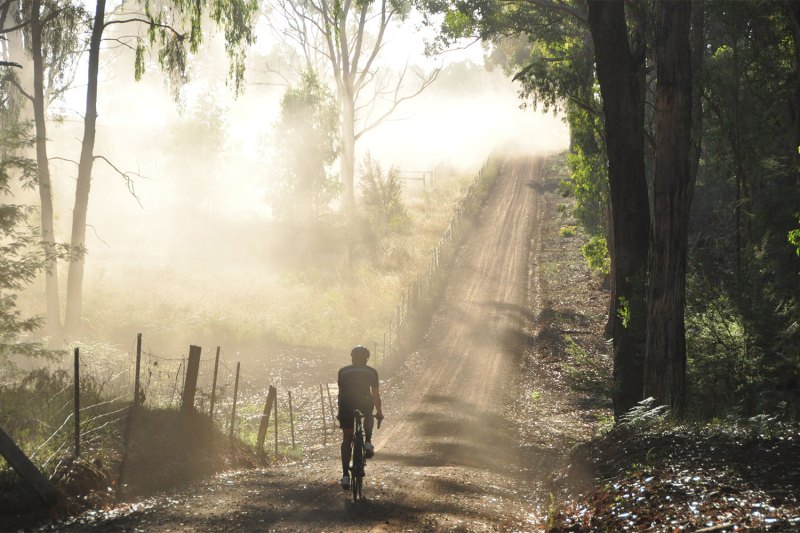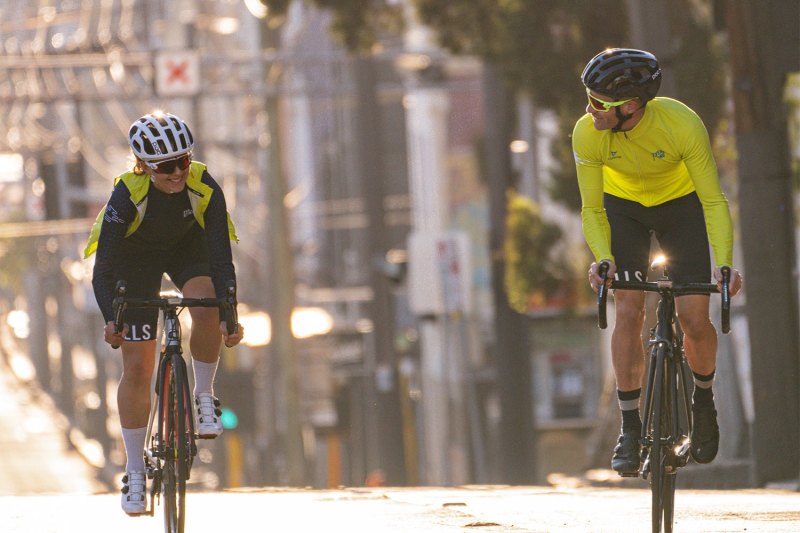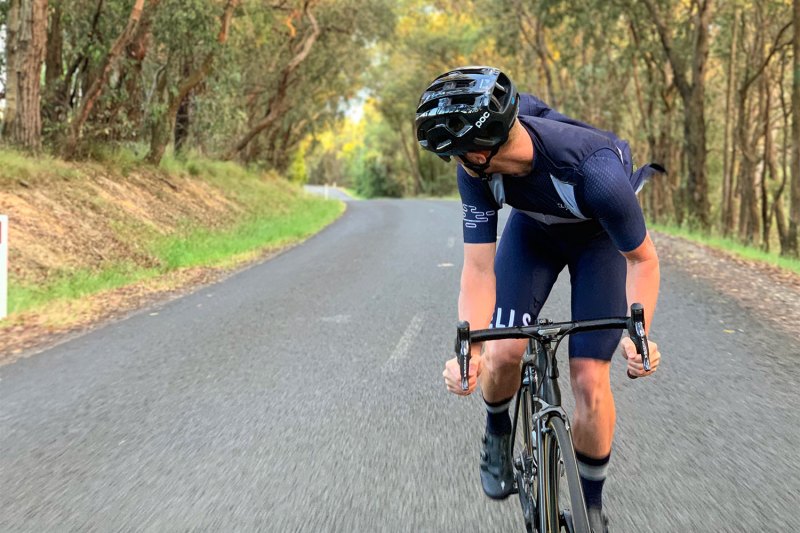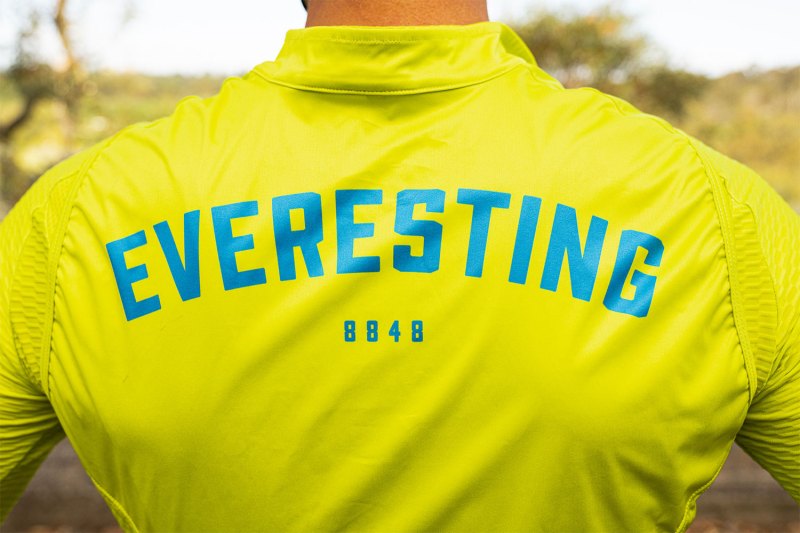When COVID-19 necessitated the cancellation of marathons and races all over the world, people didn’t let the lack of space or ability to go outdoors stop them from getting their reps in; they just did them on a smaller scale. Cyclists completed socially distanced runs on isolated tracks for virtual races. Runners lapped entire marathons in their driveway. Back and forth, again and again, passing the same scenery for hours on end until they reached their goal.
Well, turns out there was a group of people doing that way before it became a thing during the pandemic. It’s called Everesting.

Everesting is an endurance challenge in the cycling community where a cyclist chooses a hill anywhere in the world and then rides up and down it as many repeats as it takes to reach the full height of Everest: 8,848 meters or 29,029 feet. While there is no time limit, the challenge has to be completed in one go. It’s been described as “masochistic” and “fiendish.”
“It is slightly insane,” says Australian cyclist Andy van Bergen. In 2014, van Bergen and his Melbourne-based cyclist club, the Hells 500, officially created the Everesting challenge, with 65 members of the team and other cyclists around the world quietly undertaking the challenge for the first time. “We had no idea if it was going to be possible.”
Since that first attempt, van Bergen has Everested ten times and the challenge itself has spread around the globe, getting far bigger than he ever thought it would.
“I was surprised back when there were a hundred people in the world who were crazy enough to take this on,” he says. “And last month there were over 1,200 Everestings in a month. It’s so, so crazy.”

Although it’s been fairly well-known throughout the cycling community for the past few years, it was the pandemic that really brought Everesting into the public eye. For various reasons, it was a great challenge to take on during isolation: You could complete it in a small amount of space, people finally had enough free time on their hands, it could be done virtually, and it could be done anywhere in the world. In addition, many professional athletes, unable to train away from home and with calendars suddenly free of professional obligations and races, decided to take it on. Some even took part in Everesting fundraisers to raise relief funds for those impacted by COVID-19, like Rebecca’s Giddy-Up Challenge, which raised over $130,000.
Related Reading
- The Most Challenging Hikes in America
- Best Mountain Bike Destinations
- The Cost of Climbing Mount Everest
Van Bergen says that one of the inspirations behind creating the Everesting challenge is that it can be hard for non-cyclists to grasp the difficulty of a particular race or goal. Most people would understand the significance of training for a runner’s marathon, but there was no equivalent “wow, you’re doing that?!” challenge in cycling. But everyone knows Everest; they can picture it in their mind’s eye and know that it’s the tallest mountain in the world. So there is instant recognition of just how immense the challenge is.
“The whole idea behind it was to create something that just sounded so bonkers but at the same time, you could relate to it,” van Bergen explains.
Another reason Everesting has garnered more attention during the pandemic was because of a brutal world record overtake that happened during “iso” as van Bergen calls isolation. On May 11, Phil Gaimon, a retired pro cyclist, set the world record at seven hours and 52 minutes, only to have mountain biker Keegan Swenson steal the record away a few days later on May 15, shaving 12 minutes off Gaimon’s time to set the new record at seven hours, 40 minutes, and five seconds.

Although the official challenge has only been around for about six years, the concept actually dates back to 1994, when the first unofficial attempt was carried out by a descendant of one of the first people to try and summit Everest: George Mallory II. His grandfather, George Herbert Leigh Mallory, was a key member of the first three British expeditions to try and scale the mountain. Mallory was obsessed with Everest and was determined to reach the summit. On his final expedition in 1924, he and his climbing partner disappeared not far from the summit. His body was finally found in 1999.
The question of whether they made it to the summit or not is one of the great unknowns of mountaineering lore. But his grandson, George Mallory, carried on the family quest, summiting Everest himself in 1995. It was in preparation for that climb that he first completed his own Everest cycling challenge, and overall has Everested eight times.
Since then, with the Hells 500 creating the official Everesting challenge in 2014 and bringing attention to it with their own attempts and badges of honor to mark success (a gray jersey marker), there have been nearly 8,000 successful Everesting attempts. As the challenge has grown, it has also opened up to runners and virtual racing. Attempts have been made in almost a hundred countries; there have even been several Everesting on Everest attempts, the first being completed by Zhuangchen “JJ” Zhou in 2018 near the Tibetan base camp.
In order for an Everesting attempt to be official, it needs to be recorded on Strava tracking software; if you’re undertaking a VR attempt, it needs to be recorded on Zswift. The rest of the rules are fairly straightforward: the attempt must be made in one go doing a single activity (i.e. cycling or running). You can take breaks, but you cannot sleep during the attempt. The route can be “of any length, on any hill, mountain, driveway or bridge,” but must be focused on just one mountain or hill. It cannot be a loop. You must complete 8,848 meters, which counts as your “total elevation gain.” Swenson completed his world record attempt in 29 runs, but others have taken hundreds.

Due to the sheer physical endurance required to take on this challenge, van Bergen “100%” encourages training in advance, working along a similar timeline as that of training for a marathon, with the training peaking about two weeks before go-time.
“If you’ve got a good base level of fitness, you can probably build up to an Everesting in I think about six to ten weeks,” he says. He also recommends training on a different hill than the one you plan to Everest on. “You don’t want to get sick of the same climb over and over again!”
To help people with training, van Bergen also says that they’ve recently launched Basecamp Everesting or Half-Everesting, which is essentially like doing a half marathon in preparation for the full marathon. It helps you get a feel for how you will stack up mentally and physically on the actual day of, and where you need to improve. “It’s a great stepping stone,” he explains.
But as with any endurance challenge, the physical toll is only the half of it; you also need the mental fortitude and strength to keep going, especially in a challenge that’s as repetitive as this.
“The mental aspect of Everesting is probably one of the biggest hurdles to overcome,” van Bergen says. “If you can stay on top of things mentally, then you’re definitely setting yourself up for more likely success.”
So then why do it? If it’s so grueling and difficult, why? Perhaps the answer lies in the challenge’s place of origin. George Mallory once famously said that he wanted to climb Everest “because it’s there,” a sentiment that has become a mantra in the mountaineering community. Mountains can be inhospitable, dangerous places, but people are still drawn to them, both for a deep love of the landscapes and for the adventure of climbing them just to see if it can be done. Nothing beats the thrill of standing on top of a mountain you’ve just climbed.

But in Everesting, there is no grand mountain to scale. There is no visible summit to keep you slouching onward. There is no rewarding view at the peak; in the end, it’s the same view you’ve been looking at for hours. There’s also no sense of camaraderie and community among fellow climbers; Everesting is a largely solo endeavor. It is mentally and physically taxing, requiring stamina, determination, and a high tolerance for repetition and pain.
So why do it? Well, why not?
For one thing, van Bergen says, cyclists feel a certain pride in finally having a truly outlandish challenge to call their own. “For once, you can do something in cycling where you can talk to anyone, cyclist or not, and say ‘hey, I climbed the height of Everest on this hill’ and it’ll blow their mind,” says van Bergen.
But it’s also because of that “because it’s there” mentality. Asking yourself “has this been done before? Can it be done?” And then doing it just for the hell of it.
Van Bergen sees Everesting continuing to gain popularity and grow, especially as more people learn of riders in their community having Everested and being inspired by that. But even though it’s an extremely difficult undertaking, van Berger says that one of the whole points of Everesting is that it’s open to everyone. It doesn’t require any particular technical skills or knowledge. All it takes is training and the determination to get it done.
“The endorphin rush you get … it’s amazing,” van Bergen says. “It’s addictive.”
So, if you’ve ever wanted to climb Everest but either don’t have the time or money or don’t want to contribute to the dangerously long lines that are taking over the world’s highest mountain, get yourself a bike and start training.



